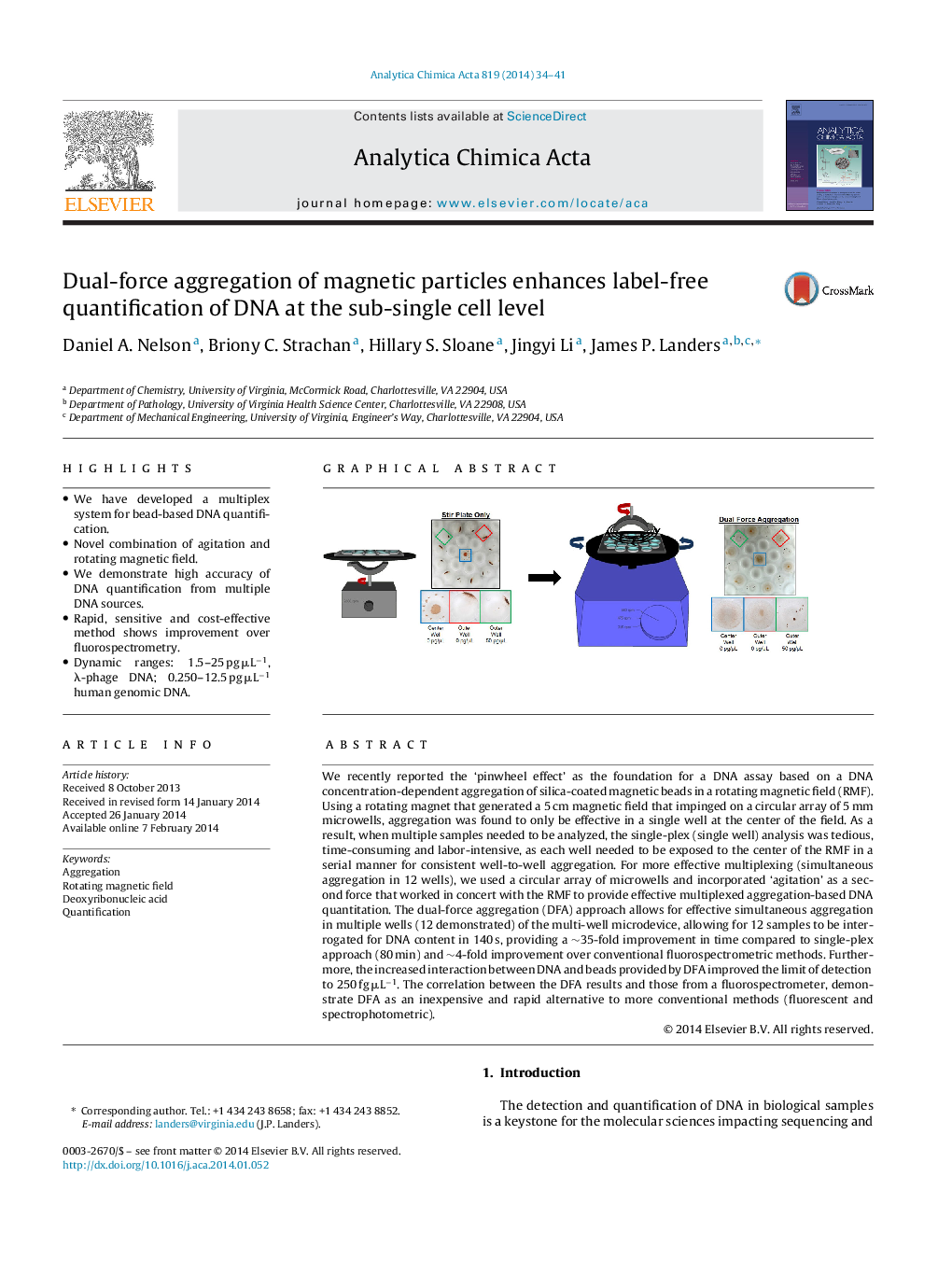| کد مقاله | کد نشریه | سال انتشار | مقاله انگلیسی | نسخه تمام متن |
|---|---|---|---|---|
| 1163989 | 1491013 | 2014 | 8 صفحه PDF | دانلود رایگان |

• We have developed a multiplex system for bead-based DNA quantification.
• Novel combination of agitation and rotating magnetic field.
• We demonstrate high accuracy of DNA quantification from multiple DNA sources.
• Rapid, sensitive and cost-effective method shows improvement over fluorospectrometry.
• Dynamic ranges: 1.5–25 pg μL−1, λ-phage DNA; 0.250–12.5 pg μL−1 human genomic DNA.
We recently reported the ‘pinwheel effect’ as the foundation for a DNA assay based on a DNA concentration-dependent aggregation of silica-coated magnetic beads in a rotating magnetic field (RMF). Using a rotating magnet that generated a 5 cm magnetic field that impinged on a circular array of 5 mm microwells, aggregation was found to only be effective in a single well at the center of the field. As a result, when multiple samples needed to be analyzed, the single-plex (single well) analysis was tedious, time-consuming and labor-intensive, as each well needed to be exposed to the center of the RMF in a serial manner for consistent well-to-well aggregation. For more effective multiplexing (simultaneous aggregation in 12 wells), we used a circular array of microwells and incorporated ‘agitation’ as a second force that worked in concert with the RMF to provide effective multiplexed aggregation-based DNA quantitation. The dual-force aggregation (DFA) approach allows for effective simultaneous aggregation in multiple wells (12 demonstrated) of the multi-well microdevice, allowing for 12 samples to be interrogated for DNA content in 140 s, providing a ∼35-fold improvement in time compared to single-plex approach (80 min) and ∼4-fold improvement over conventional fluorospectrometric methods. Furthermore, the increased interaction between DNA and beads provided by DFA improved the limit of detection to 250 fg μL−1. The correlation between the DFA results and those from a fluorospectrometer, demonstrate DFA as an inexpensive and rapid alternative to more conventional methods (fluorescent and spectrophotometric).
Figure optionsDownload as PowerPoint slide
Journal: Analytica Chimica Acta - Volume 819, 28 March 2014, Pages 34–41